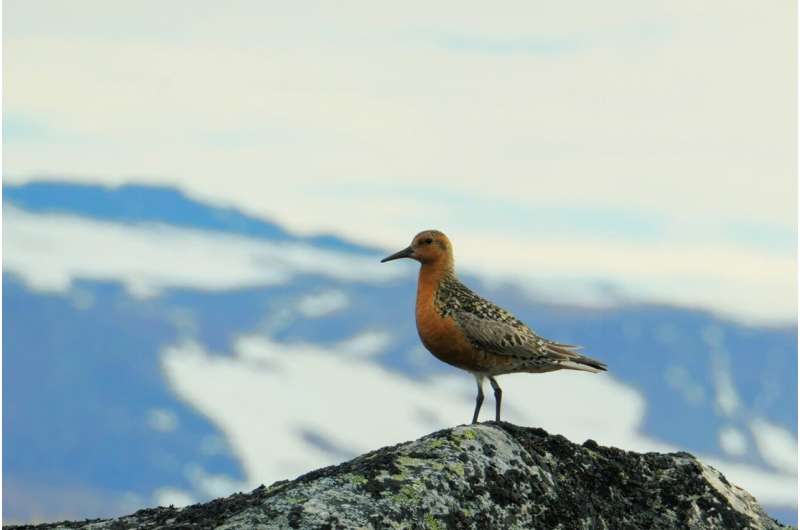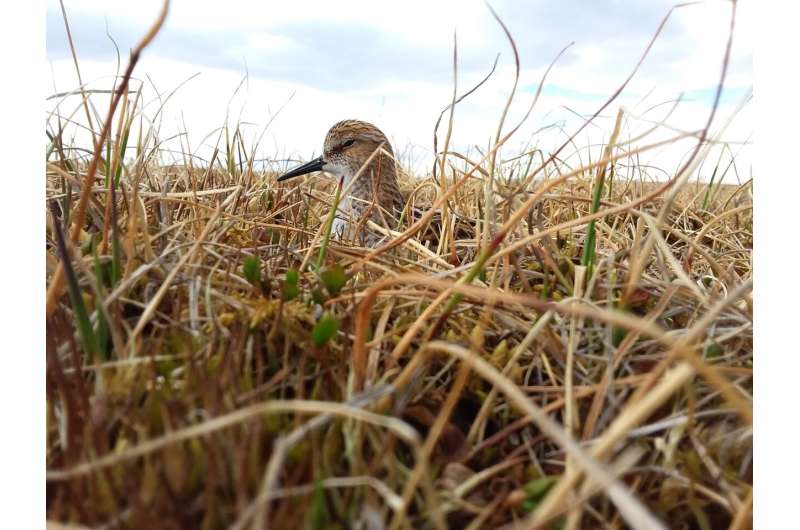This article has been reviewed according to Science X's editorial process and policies. Editors have highlighted the following attributes while ensuring the content's credibility:
fact-checked
trusted source
proofread
Ecologist cautions researchers to look more closely at apparent mismatches between birds and their prey

Climate change may speed up the emergence of insects in northern countries at the end of winter. This may cause breeding birds migrating from the south to come too late to benefit from the insect peak if they do not adjust their travel schedules to the new situation.
But Misha Zhemchuzhnikov, an ecologist at the Royal Netherlands Institute for Sea Research (NIOZ), warns his fellow researchers not to jump to conclusions too easily on possible mismatches in nature.
"If you take, for example, a close look at the biomass of the key prey item, instead of the total biomass of insects that come from the melting grounds in Taymir, in northern Russia, you may get a much better understanding of these so-called trophic mismatches," he says.
Zhemchuzhnikov will defend his Ph.D. thesis on relationships between shorebirds and arthropods in northern Russia (and Greenland) on March 5th at Groningen University.

Shorebirds are generalists with a preference
The so-called trophic match or mismatch between birds and their prey is not an easy linear equation, Zhemchuzhnikov concludes, stating, "We not only need more reliable data on the mass of insects in relation to snow melt, but we also need to take a closer look at specific species of insects."
Chicks of waders like the red knot are "omnivorous" when it comes to certain species of insects. But when Zhemchuzhnikov looked at the DNA of insects that he found in droppings of the little birds, he saw that they do have their preferences. "Yes, they can eat almost any insect, but in daily life on the tundra, they prefer crane flies," Zhemchuzhnikov clarifies.

It is therefore necessary to look at the specific numbers and biomass of the preferred prey of the birds. "Looking at 'just' general insect numbers or 'just' biomass may also provide a deceiving picture," Zhemchuzhnikov warns. "Based on the long-term monitoring near the research station of Zackenberg, we know that numbers and biomass are not always in sync. This may result in different conclusions about the trophic mismatches."
Zhemchuzhnikov urges researchers to set up standard field trials, using pitfalls to catch, count and weigh insects on the tundra. "With the bright colors of these pitfalls, one can also catch flying insects—the pollinators of the Arctic flowers," Zhemchuzhnikov says. "But it takes a lot of scientific stamina to be able to draw sound conclusions in the long run."
Unfortunately, there is no diet data from Siberia collected in the past.
"However," Zhemchuzhnikov continues, "there is an alternative way for going back in time and getting an idea about diet composition. We know that the chemical fingerprint that specific species of insects leave behind in birds can be found in feathers as well. And luckily, we have a huge sample of these feathers from the juvenile birds, collected for several decades in their wintering sites. Therefore, we are working on a method where we can track back the diet of the birds, analyzing the feathers that were formed during their growth in the breeding grounds."
More information: PhD Defense: 5 March 2024, 12:45. Location: Aula, University of Groningen
Provided by Royal Netherlands Institute for Sea Research



















